This plant is relatively young in indoor floriculture. In appearance, it resembles a miniature copy of Benjamin's ficus. They have the same leaf color with some difference in size. Indoor culture is called dwarf ficus (or Pumila ficus), which is an interesting undersized plant with a creeping stem and small, slightly rounded leaves.
Growing in nature
As the name implies, this variety is the smallest of the ficuses.
Under natural conditions in its homeland (in Japan, China and Vietnam), dwarf ficus (photo below) can grow well on the bark of trees, as well as just on the surface of the soil, densely covering it. Its vegetative development occurs in the same way as that of a periwinkle plant. The similarity with the latter lies in the fact that the ficus also grows at a high speed and is able to cover a fairly decent area of the earth's surface in a short time.
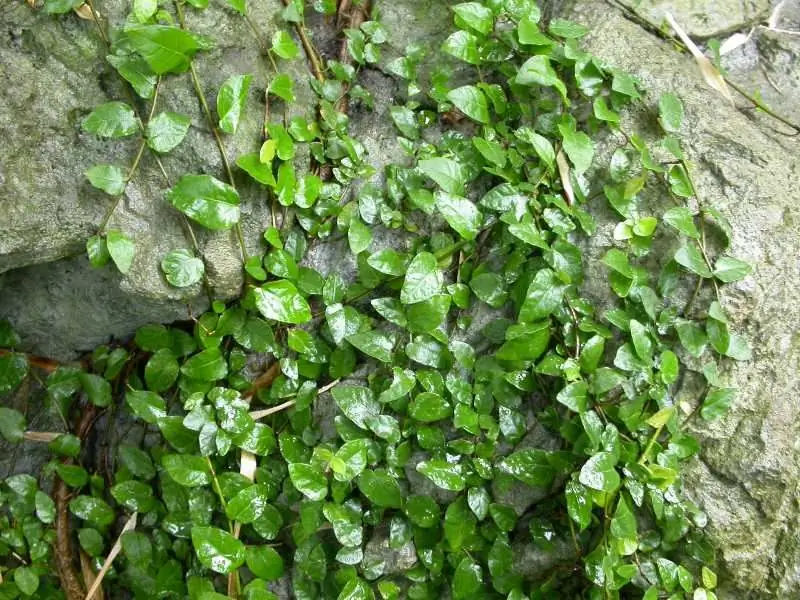
Description of the plant
Dwarf ficus Pumila is a fairly compact plant that provides ample opportunities for its use. It can be grown as a cover (covering not very attractive areas) and as an independent crop.
The indoor variety of this plant has been known since the beginning of the 18th century. She fell in love with flower growers for her unpretentiousness in care and conditions of detention. This is a fast-growing, small-leaved ficus, although its green plates are not so miniature. In a developed adult plant, their length can reach up to 5-8 centimeters, which is comparable to the leaves of the taller ficus Benjamin.
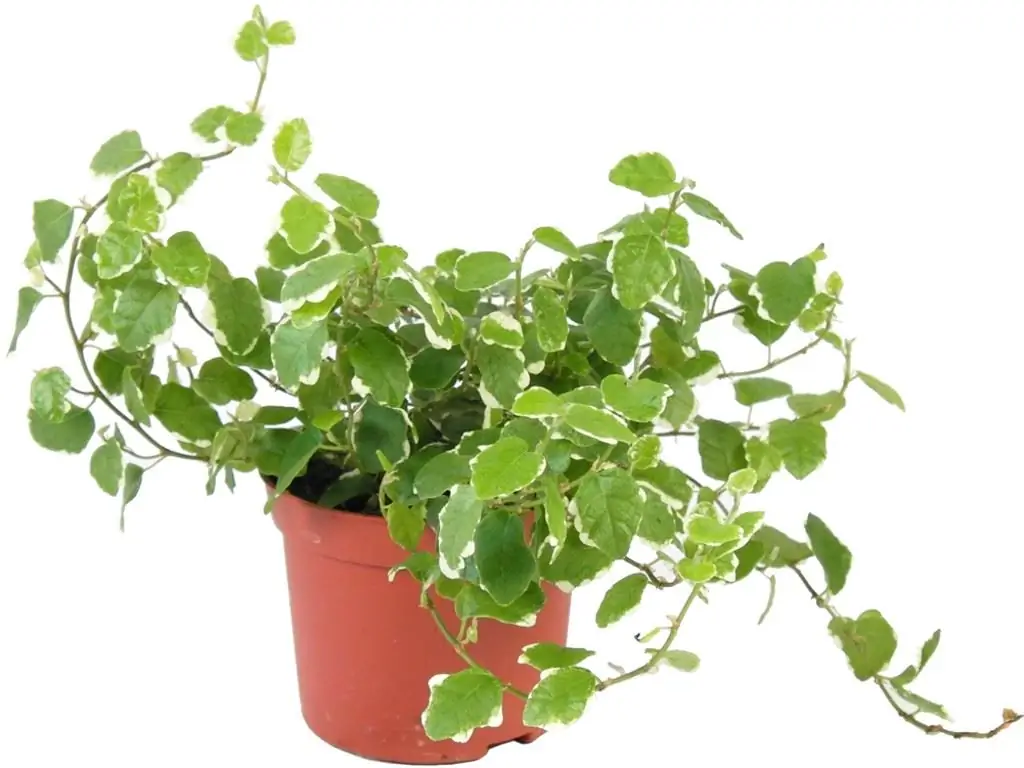
The leaves are wrinkled, rough, with a mesh pattern in which the shape of hearts is slightly distinguishable. They are located on the branches in two rows. It should be noted that pumila blooms beautifully in nature, but this is practically impossible to achieve at home. This is due to the fact that the dwarf ficus has two types of branches: fertile adults with leaves up to 10 centimeters long; and barren - with small leaf plates. On adult shoots, syconia inflorescences ripen (shaped like a small pear), up to 5 cm in size. As they grow, they change color from green to orange. When grown at home, adult shoots of this ficus do not form, therefore they do not have inflorescences.
This species in room culture is mainly grown as an ampelous plant. Particularly popular arethe following varieties: Sunny, White Sunny and Dort.
Care
Dwarf ficus grows well at home. This is a very hardy plant. It withstands considerable temperature fluctuations, and due to its rather slow growth (unlike the natural variety), it can maintain its excellent shape for a long time without shaping. It should be noted that in the cold season, the development of ficus almost stops.
The plant does not really need lighting. Watering should be done after the top of the substrate has completely dried, which should be loose and breathable.
Due to the fact that the dwarf ficus has a superficial root system, the pot should not be very deep. This plant grows well in small, wide containers, and with all this, there is no need for a regular transplant. You can simply update the top layer of the substrate annually, especially in sufficiently mature plants. Only young ficuses, due to their growth, should be replanted annually in larger containers.
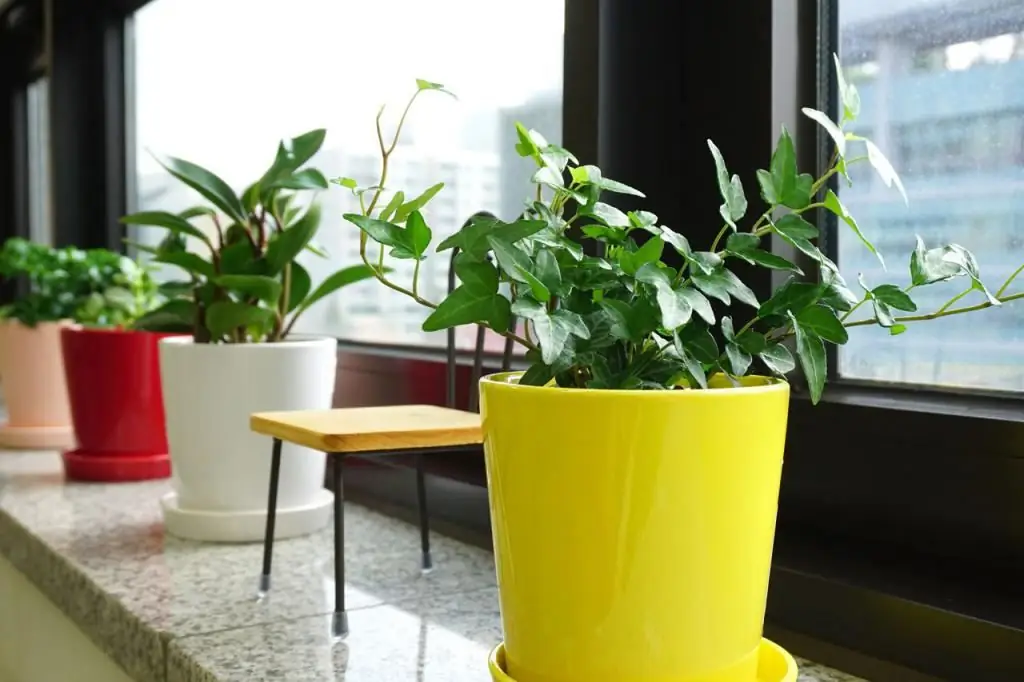
Lighting and temperature
Besides the fact that the dwarf form of ficus is compact, it also grows well in low light conditions. The flower can also be grown on the north side of the room, but, nevertheless, the east and west windows will be the best for it. A feature of the dwarf ficus is its preference for diffused light.
In case of lack of lighting, especially for variegated varieties, the elongation of shoots and chopping will immediately be noticeableleaflets. Along with this, the pattern will also become thinner, or even completely disappear.
The most comfortable temperature regime for ficus: about 20-25 degrees in summer, 10-12 degrees in winter. Under natural growing conditions, the plant can easily tolerate temperatures below 8 degrees, and even light frosts.

Water and spraying
Negatively, dwarf ficus refers to both overdried soil and its excessive waterlogging. The frequency and frequency of irrigation depends to a greater extent on the time of year, the volume and composition of the earth, and air temperature. During the warm season (vegetation season), the soil in the container should always be slightly moist. In winter, you need to give the top layer of the earth to dry slightly. Do not use cold tap water. It should be settled and warm. Excess water must be drained from the pan.
The same water conditions must be observed when spraying the plant. And best of all, this should be done with warm boiled water. With increased dryness of the atmosphere in the house, the plant should be sprayed more often.
Fertilizer
Not capricious in terms of feeding dwarf ficus. Care consists in fertilizing only in the spring and summer (twice a month). Since ficus is an ornamental leafy plant, it is necessary to use fertilizers with a high nitrogen content for the good development of its green mass.
And yet, it is important to remember that this event should be treated with care. An overdose can cause the plant to dropleaves. It is enough to apply ready-made liquid fertilizer intended for ornamental crops during the growing season. In autumn and winter, you can also apply top dressing in the form of solutions of low concentration, and no more than once a month.
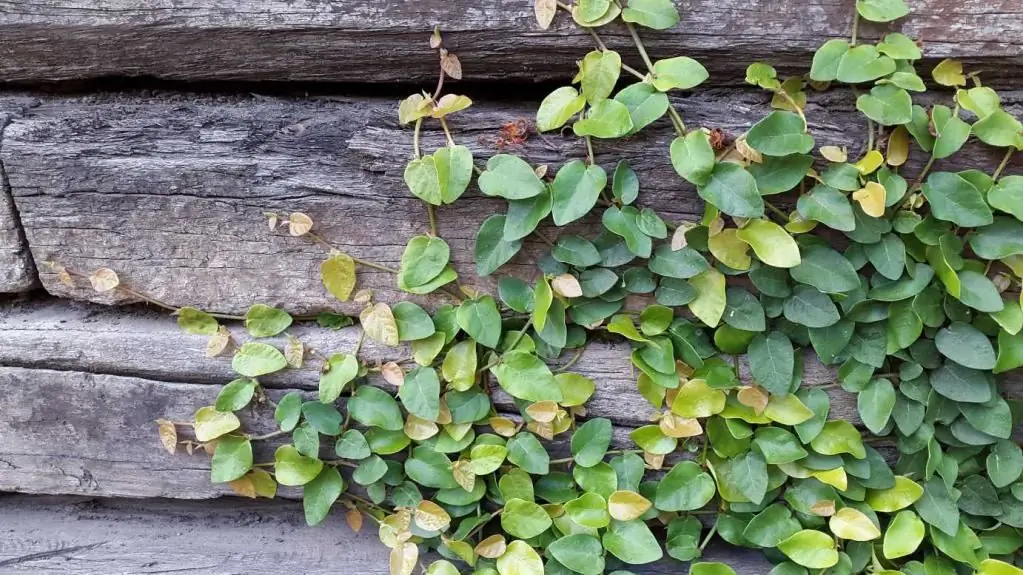
Problems
One of the mistakes of beginner flower growers is overexposure of dwarf ficus in the sun. This can be one of the reasons for the shedding of leaves, and possibly the death of the plant. Growing ficus outdoors, without much shelter from the direct rays of the sun, can cause burns.
Root rot can be caused by heavy soil and overwatering. This problem can be de alt with with a light, nutritious substrate and good drainage.
If the leaves of the ficus begin to turn yellow, it means that either the soil is acidified or it is depleted. Sometimes rotting of the plant is observed.
Sometimes ficus can be attacked by a mealybug and spider mite. This is due to dry air. Keeping a plant strong and he althy can be done by maintaining cleanliness, regular spraying and removing diseased and sluggish shoots.
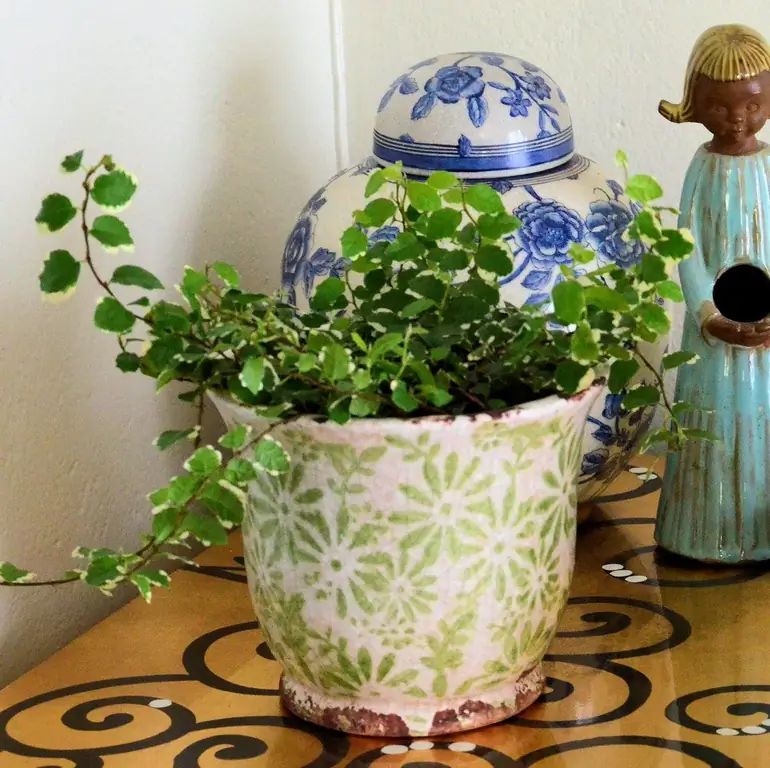
Reproduction
Reproduction of this flower is not something difficult, as well as following the rules of care. At home, dwarf ficus can be propagated by layering or cuttings. The first option can be used in spring and summer. To do this, the strongest shoots in several places are pinned to the ground for their rooting. After that, the mother is cut off, andthe young sapling is left to gain strength. If there are sufficiently long shoots, rooting can be done in a separate container. But the mother plant will look unattractive until the cuttings are accepted and removed. Reproduction in this way can be done throughout the spring-summer season.
When rooting in the second way, the cuttings are planted in perlite or placed in water to form roots.
Ficus in bonsai style
The popular ficus Benjamin has a dwarf variety called "Natasha". Under natural conditions, it reaches a height of up to 10 meters, and in room conditions these values \u200b\u200breach only 40-50 cm. Its homeland is the islands of Ceylon and Java.

Due to the not thick and flexible trunk, the tree is convenient for shaping. It can be tilted, bent and twisted. Leaves with pointed tips bent down (up to 3 cm in size) have a glossy surface. Coloring is both light and dark green. The branching trunk of the plant has a lush crown.
The Benjamin "Natasha" ficus variety is widely used in the creation of different types of bonsai.






